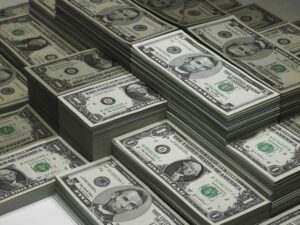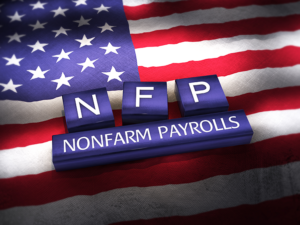
Dollar Rises Amid Middle East Tensions and BoE Rate Cut

The dollar strengthened on Thursday, driven by increasing geopolitical tensions, while the British pound declined following an interest rate cut by the Bank of England from its 16-year high.
Concerns about escalating conflicts in the Middle East surged after the assassination of Hamas leader Ismail Haniyeh in Tehran on Wednesday. This incident has sparked threats of retaliation against Israel.
Karl Schamotta, Chief Market Strategist at Corpay in Toronto, noted, “We are looking at the threat of outright conflict breaking out in the Middle East. That is supporting the dollar’s safe-haven appeal.”
The dollar also rebounded after a selloff on Wednesday, following dovish comments by Federal Reserve Chair Jerome Powell at the conclusion of the U.S. central bank’s two-day meeting. This selloff was perceived as possibly overdone.
“Although Jerome Powell was extremely dovish in the press conference, the statement released by the Federal Open Market Committee really sounded more balanced,” said Schamotta.
Powell indicated that interest rates could be cut as soon as September if the U.S. economy follows its expected path. The Fed’s policy statement on Wednesday highlighted “some further progress toward the (Federal Open Market) Committee’s 2% objective,” while noting that the unemployment rate remains low at 4.1%.
Traders are now fully pricing in three 25-basis-point rate cuts by year-end, suggesting one cut at each of the Fed’s September, November, and December meetings.
The next significant U.S. economic release likely to influence Fed policy is Friday’s jobs report for July. Expectations are for employers to have added 175,000 jobs during the month, with the unemployment rate remaining steady at 4.1%.
Data on Thursday showed that the number of Americans filing new unemployment benefit applications increased to an 11-month high last week.
The dollar index was last up 0.35% at 104.41.
Tumbling stocks also likely enhanced the safe-haven appeal of the U.S. currency.
Sterling dropped 0.96% to $1.2733, the lowest level since July 3, after the Bank of England cut interest rates following a tight vote by policymakers. Governor Andrew Bailey led the 5-4 decision to reduce rates by a quarter-point to 5%, indicating a cautious approach moving forward.
“If you look at the headlines that Bailey produced: caution on cutting too quickly or by too much, it implies to me that they’re looking at sort of a steady quarterly pace of reductions,” said Colin Asher, economist at Mizuho.
The euro touched a three-week low of $1.07775 and was last down 0.36% at $1.07865.
The Japanese yen edged higher after a dramatic rally following the Bank of Japan’s decision to hike rates to 0.25%, the highest since 2008.
The yen has gained since hitting a 38-year low of 161.96 against the dollar on July 3, bolstered by interventions by Japanese authorities and traders unwinding carry trades in which they were short the yen and long U.S. dollar assets.
The dollar was last down 0.21% at 149.65 yen. It earlier reached 148.51, the lowest since March 15.
In cryptocurrencies, Bitcoin fell 2.68% to $62,848.
Never miss any important news. Subscribe to our newsletter.
Related News


USD/INR Slows Down Amid Mixed Indian PMI Data.


USD/INR Rises as Markets Anticipate Fed Rate Decision.


Gold Price Nears Record High Amid Strong Safe-Haven Demand.



USD/INR Gains Momentum Amid Trade Tariff Uncertainty.



Never miss any important news. Subscribe to our newsletter.
Editor's Pick


USD/INR Slows Down Amid Mixed Indian PMI Data.


USD/INR Rises as Markets Anticipate Fed Rate Decision.



